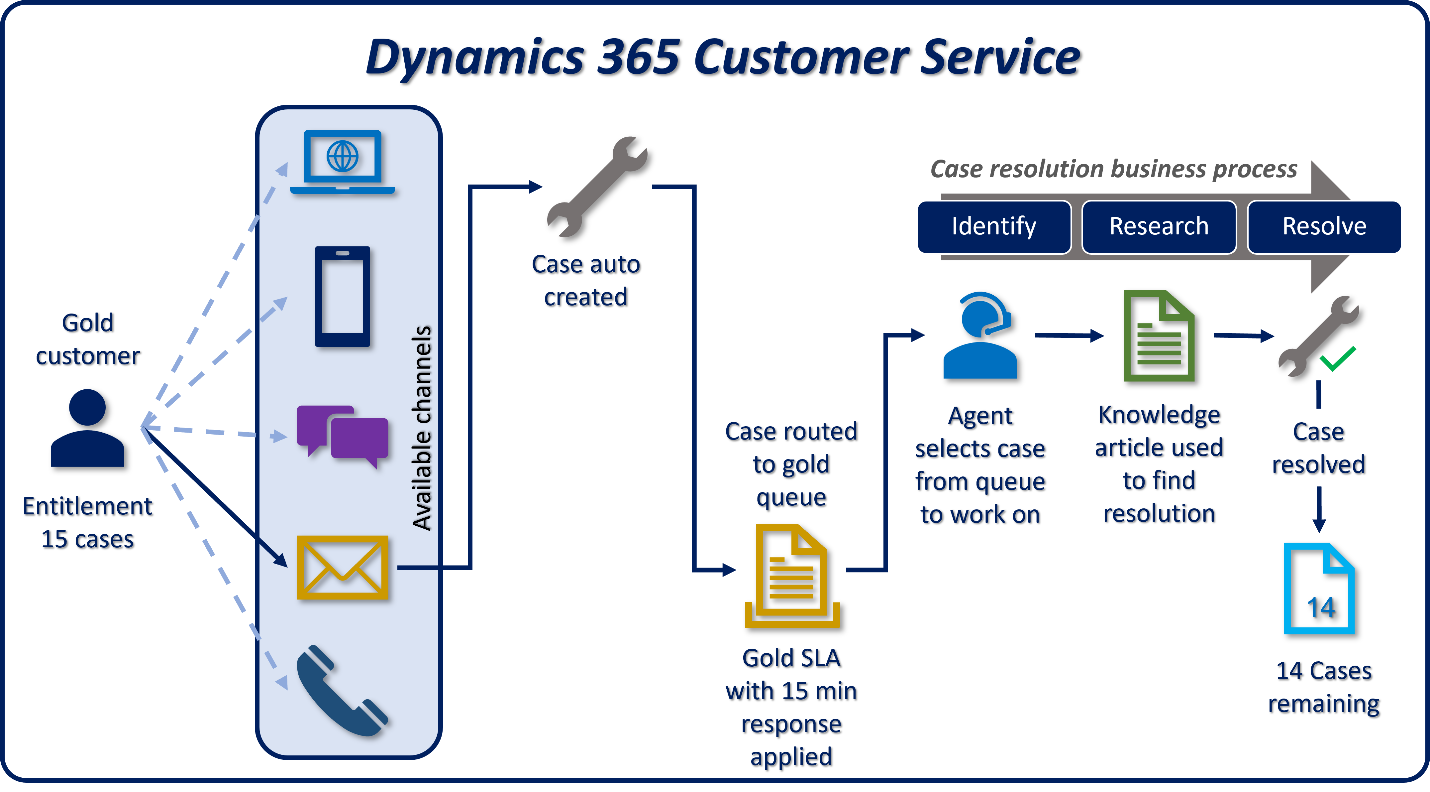Describe use cases for Dynamics 365 Customer Service
Dynamics 365 Customer Service helps you better serve your customers by equipping you with what you need to be successful. It provides tools to help manage caseloads, generate service-related activities, and find the best resolution to a customer’s problem. It provides traditional case management functionality, or when paired with other Dynamics 365 Service applications, it provides a foundation to build a complete omnichannel solution for your customers.
In today’s world, agents must have a total understanding of a customer when they request support. For example, some customers may be entitled to different levels of service than others. The response time promised to a customer may vary based on their identity and purchase history. They may also have a specified number of cases they can open for the products they’ve purchased. Failure to meet those promises can have a significant impact on customer satisfaction and customer retention.
By using Dynamics 365 Customer Service, you can:
Enter and track customer issues by creating case records
Manage and log all related case interactions, such as phone calls and tasks
Provide a platform to share knowledge by applying the knowledge base
Create queues and route cases to the right channels
Manage issues for multiple customers at one time with multi session capabilities
Route issues to the most qualified agent through intelligent routing
Create and track service levels through Service Level Agreements (SLAs)
Define service terms through entitlements
Manage performance and productivity through reports and dashboards
Create and schedule services
Provide agent guidance with agent scripts
Manage conversations across channels
There are many different scenarios where an organization might use Dynamics 365 Customer Service.
Contact Center: A contact center might utilize Dynamics 365 customer service for their contact center staff. As customers engage with the organization across different channels, items are routed to the best agent to work on the item based on the agent’s experience.
Service Center: A service center such as an automotive repair shop might use Dynamics 365 Customer Service for scheduling services provided to customers at dedicated service centers.
Knowledge Repository: A customer support center might use the knowledge management capabilities of Dynamics 365 Customer Service. Customer Service helps create a knowledge repository that is accessible to agents while working to resolve customer issues.
The use cases mentioned represent a few possible scenarios where Dynamics 365 Customer Service might be used. Let’s look at an example of how Dynamics 365 Customer Service can be used to provide an end-to-end customer service solution.

As we can see from the image, we have a gold customer who has a support agreement with our organization that entitles them to open 15 cases with our organization during a predefined period.
The customer’s support agreement determines how they can open new cases. They can do so through multiple channels, including phone, mobile device, social media, or email. (In our example, the customer sent an email requesting support.)
Case creation rules examine the received email to identify those from whom it came. The email's content is also examined to create a case record for the customer in the application.
Routing rules examine criteria on the case to automatically route the case to the most appropriate queue once the case record is created. In this scenario, it routes the case to a dedicated queue for cases submitted by gold customers.
The customer, as a gold customer, is entitled to initial contact from an agent within 15 minutes of creating a case, as determined by a service level agreement in Dynamics 365 Customer Service.
A support agent who has access to the gold queue, grabs the case from the queue to work on it and is now responsible for resolving the case.
Case resolution business process flow within the record provides guidance to the agent while they work through resolving the case.
The agent finds a knowledge article that contains a potential resolution to the case by using the organization's knowledge base. From within the case record, they can email the article directly to the customer and resolve the case.
The customer’s entitlement record, which stores their support agreement details, is updated to reflect that they now have 14 cases remaining on their entitlement.